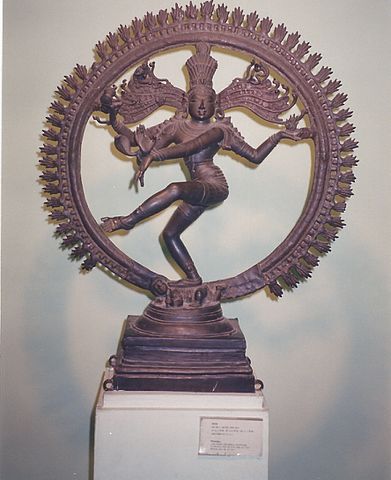
12th century, late Chola
Delhi National Museum

14th century, Madras
Bharat Kala Bhavan Museum, Varanasi.

12th century, late Chola Delhi National Museum |

14th century, Madras Bharat Kala Bhavan Museum, Varanasi. |
The symbolism presents Shiva as lord of the cosmic dance of creation and destruction. He is active, yet aloof, like the gods on the Parthenon frieze. (By contrast, Vishnu is completely passive in his own creation story as he dreams the world into existence.)
Surrounding Shiva, a circle of flames represents the universe, whose fire is held in Shiva's left rear palm. His left front arm crosses his chest, the hand pointing in "elephant trunk" position (gaja hasta) to his upraised left foot which signifies liberation. His right foot tramples the much put-upon dwarf Apasmara, who represents ignorance.
The hand of Shiva's right front hand is raised in the "fear-not" gesture of benediction (abhaya mudra), while his right rear hand holds a drum with which he beats the measure of the dance.
The snake, an emblem of Shiva, curls around his arm. His hair holds the crescent moon - another emblem - and a small image of Ganga, the river-goddess whose precipitous fall from heaven to earth is broken by Shiva's matted locks.

|

|

|